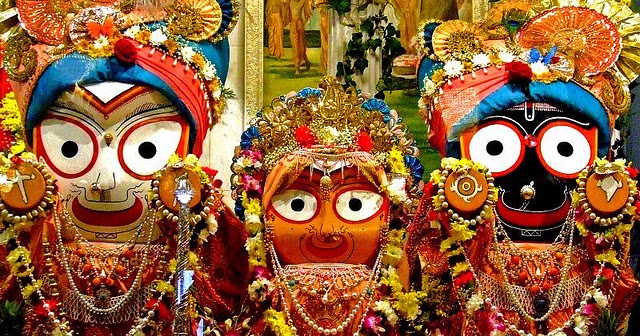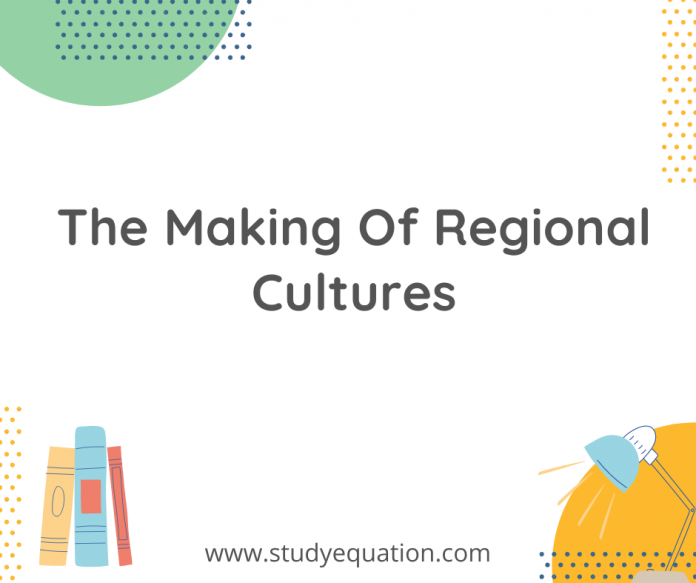NCERT Solutions Class 7 History Social Science The Making Of Regional Cultures – chapter 10 along with summary, notes and solutions. This chapter is on the various dynasties and languages that have made up regional cultures in India. It shows us the importance of learning history to understand how our country developed in such a diverse manner
Table of Contents
The Making Of Regional Cultures

Jagannatha Cult
Regional communities also evolved around religious practices in many countries. A wooden image of the deity was created by the local people and, originally a local God, came to be associated with Vishnu. The centre of pilgrimage became the Shrine.
The Rajputs
In the 19th century, the Rajasthan of today was called Rajputana by the British. There are several communities in Northern and Central India who call themselves Rajputs. One such king was Prithviraj Chauhan and since they practised sati or self-immolation, women were given a heroic portrait.
The Kathaks
In the evolution of dance in many countries, the heroic rituals in different regions have helped, such as Kathak, which was established in Northern India. Initially, in North Indian temples, the Kathaks were a caste of storey-tellers which has integrated folk dance with the foundational movements of the storytellers of the kathak.

Miniature painting
One more tradition that merits our attention during this period is miniature painting. Miniatures are miniature drawings done on canvas or paper in water color. Highly trained painters were employed by Akbar, Jahangir and Shah Jahan to illustrate their manuscripts containing their accounts and poetry in the Kitab Khana. As the Mughal empire began to collapse, the regional court of Deccan and Rajput rulers developed new artistic tastes.
Development of Bengali
The language that a person speaks in a region is a regional language. Bengali emerged from Sanskrit, but his own identity and literature later developed. Early Bengali literature can be divided into two groups, the first of which comprises Sanskrit epic translations and the second is literature by Nath. Similarly the Chera empire of Mahodayapuram, which was established in 9th century in the southwestern part of Kerala introduced the Malayalam language.
Pirs and temples
From the 16th century onwards, people moved from less fertile western Bengal to forested and marshy southeastern Bengal in large numbers. The capital moved to Dhaka, with Mughal influence over Bengal. Land grants were obtained by authorities and they set up mosques and the early colonists received help from teachers named Pirs.
Conclusion – The Making Of Regional Cultures
NCERT Solutions Class 7 History Social Science The Making Of Regional Cultures – chapter 10 along with summary, notes and solutions. This chapter teaches us the development of architecture, languages, scripts, beliefs, etc. in India.
Questions and Answers – The Making Of Regional Cultures
Short Answers – The Making Of Regional Cultures
1. Match the following:
| Anantavarman | Kerala |
| Jagannatha | Bengal |
| Mahodayapuram | Orissa |
| Lilatilakam | Kangra |
| Mangalakavya | Puri |
| Miniature | Kerala |
Answer:
| Anantavarman | Orissa |
| Jagannatha | Puri |
| Mahodayapuram | Kerala |
| Lilatilakam | Kerala |
| Mangalakavya | Bengal |
| Miniature | Kangra |
2. What is Manipravalam? Name a book written in that language.
Answer: Manipravalam means “diamonds and corals” referring to the two languages, Sanskrit and the regional language. A book written in Manipravalam is Lilatilakam, which deals with grammar and poetics.
3. Who were the major patrons of Kathak?
Answer: Kathak began evolving into a distinct mode of dance in the fifteenth and sixteenth centuries with the spread of the bhakti movement. The legends of Radha-Krishna were enacted in folk plays called rasa lila, which combined folk dance with the basic gestures of the kathak story-tellers. Under the Mughal emperors and their nobles, Kathak was performed in the court, where it acquired its present features and developed into a form of dance with a distinctive style. Subsequently, it developed in two traditions or gharanas: one in the courts of Rajasthan (Jaipur) and the other in Lucknow. Under the patronage of Wajid Ali Shah, the last Nawab of Awadh, it grew into a major art form.
Short Answers – The Making Of Regional Cultures
4. What are the important architectural features of the temples of Bengal?
Answer: Bengal witnessed a temple-building spree from the late fifteenth century, which culminated in the nineteenth century. Many of the modest brick and terracotta temples in Bengal were built with the support of several “low” social groups, such as the Kolu (oil pressers) and the Kansari (bell metal workers). When local deities, once worshiped in thatched huts in villages, gained the recognition of the Brahmanas, their images began to be housed in temples.
The temples began to copy the double-roofed (dochala) or four-roofed (chauchala) structure of the thatched huts. This led to the evolution of the typical Bengali style in temple architecture. Temples were usually built on a square platform with a relatively plain interior, but the outer walls of many temples were decorated with paintings, ornamental tiles or terracotta tablets. In some temples, particularly in Vishnupur in the Bankura district of West Bengal, such decorations reached a high degree of excellence.
5. Why did minstrels proclaim the achievements of heroes?
Answer: From about the eighth century, most of the present-day state of Rajasthan was ruled by various Rajput families. Stories about Rajput heroes were recorded in poems and songs, which were recited by specially trained minstrels. These preserved the memories of heroes and were expected to inspire others to follow their example. Ordinary people were also attracted by these stories – which often depicted dramatic situations and a range of strong emotions – loyalty, friendship, love, valor, anger, etc.
Short Answers – The Making Of Regional Cultures
6. Why did conquerors try to control the temple of Jagannatha at Puri?
Answer: Anantavarman, one of the most important rulers of the Ganga dynasty, decided to erect a temple for Purushottama Jagannatha at Puri during the twelfth century. Subsequently, in 1230, king Anangabhima III dedicated his kingdom to the deity and proclaimed himself as the “deputy” of God. As the temple gained in importance as a centre of pilgrimage, its authority in social and political matters also increased. The Mughals, the Marathas and the English East India Company Conquered Orissa and attempted to gain control over the temple as they felt that this would make their rule acceptable to the local people.
7. Why were temples built in Bengal?
Answer: The coming of the European trading companies created new economic opportunities for Bengal. The social and economic improvement led to the construction of temples. Many of the modest brick and terracotta temples in Bengal were built with the support of several “low” social groups, such as the Kolu (oil pressers) and the Kansari (bell metal workers). When local deities, once worshipped in thatched huts in villages, gained the recognition of the Brahmanas, their images began to be housed in temples.





